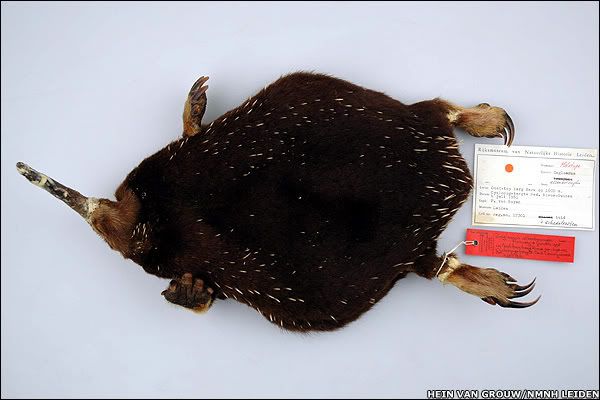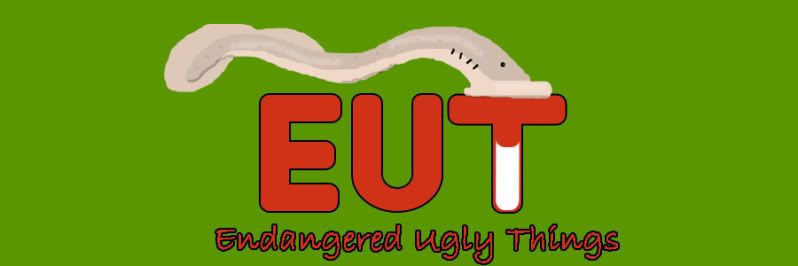 |
| Image from BBC News |
This is the Attenborough Long-beaked Echidna (Zaglossus attenboroughi). I suppose I should clarify that Sir David Attenborough is a famous TV naturalist and a co-founder of ARKive, not the Mother of All Monsters. That distinction belongs to Echidna. Actually, this is the only Attenborough Long-Beaked Echidna photograph. More on that later.
Long-Beaked Echidnas are insectivorous monotremes found on the island of Papua New Guinea. I’m not sure how much my readership knows about echidnas1, so I’ll give a basic description. Imagine a hedgehog with a long beak to help search for invertebrates, with a tongue like an anteater. Also, they lay eggs, which may seem strange. The term “monotreme” means “one hole,” which refers to their cloaca, as opposed to our… uh… two holes. There are three Long-Beaked species and one Short-Beaked Echidna.
While their smaller short-beaked cousins hunt for ants and termites, the Zaglossus2 forage for earthworms in the leaf litter. Echidnas are creatures of the night, and use their strong front claws to dig the burrows in which they sleep. Like the marsupials, they have a pouch, into which echidnas lay one egg. After hatching, the puggle3 laps milk which flows from patches, as monotremes have no teats. The young echidna is kicked out of the pouch, understandably, soon after the spines begin to develop.
The Long-Beaked Echidnas are endangered due to habitat loss and hunting for food. The reason the Attenborough Long-Beaked Echidna doesn’t look healthy in the photo is that it is the only specimen of the species, which was collected by a Dutch Botanist in 1961, and currently spends its time in a drawer in a museum in the Netherlands. Understandably, people thought it might be extinct. The good news is, new evidence suggests it might not be. In the area where they are found, the Cyclops4 Mountains, scientists have found “nose pokes,” which are holes made by the echidnas as they forage in the mud. Also, the locals say that they’ve been seeing them for about two years. The plan is to mount a full-scale expedition next year to find and photograph a live Attenborough Long-Beaked Echidna. If I’m still blogging by then, I’ll be sure to give you an update.
1I’m guessing quite a lot, but that doesn’t seem to stop me from explaining.
2Something to do with their tongues, right, Mike?
3Yes, this is the proper term for an infant monotreme.
4Alas, the Cyclopes are not among the monsters birthed by Echidna.

No comments:
Post a Comment